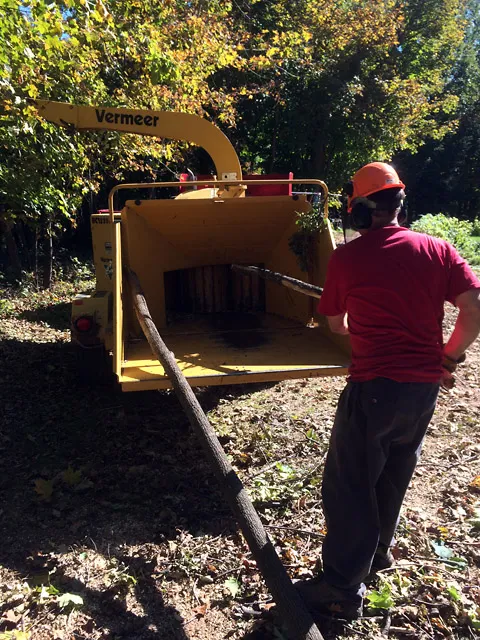Felling and Bucking
This, nine months ago, seemed a good spot for my garlic patch. It's gently sloping, south facing, and clean. Trees would need to come down. The garlic has been shipped, a bit late I think, no doubt due to the raging fires surrounding the garlic growing regions of Washington. One of my favorite suppliers had nothing to offer this season thanks to drought and fire.
What made this spot the obvious choice for my growing also made it the obvious choice for an outbuilding. At the Minnesota State Fair we spoke with a manufacturer of these buildings and they came out to the site. Last Friday, we signed. This January they start building.
My job is to make sure the site is cleared and excavated, plans and permits submitted, and the extra components -gravel, concrete, electrical and heating all get done in a coordinated fashion.
Whether it be garlic or a structure, felling trees is necessary. It's is not something we take lightly. Betsy's dad never cut a live tree, but he never had too. His old property was sculpted long ago and this new one is a work in progress.
A chainsaw wielding neighbor has done all the trees larger than four inches. Together we chip the branches and pitch the bucked logs into his truck. Dragging sixteen foot long leafy branches to the chipper, tangled as they are with other branches, over ankle twisting logs and stumps is rugged work and physically draining. Most I can do is three hours at a time.
Nothing shall be wasted. The black cherry and hickory limbs have been chipped for smoking meats. The firewood logs are partial payment to the chainsawing neighbor. We've saved several eight to twelve foot logs for lumber: hickory, black cherry, sugar maple, red oak, ironwood, and basswood. The Minneapolis College of Art and Design has a furniture program with a saw mill that goes relatively unused. We are affiliated with the school now and may take advantage of this idle tool.
A chainsaw wielding neighbor has done all the trees larger than four inches. Together we chip the branches and pitch the bucked logs into his truck. Dragging sixteen foot long leafy branches to the chipper, tangled as they are with other branches, over ankle twisting logs and stumps is rugged work and physically draining. Most I can do is three hours at a time.
Nothing shall be wasted. The black cherry and hickory limbs have been chipped for smoking meats. The firewood logs are partial payment to the chainsawing neighbor. We've saved several eight to twelve foot logs for lumber: hickory, black cherry, sugar maple, red oak, ironwood, and basswood. The Minneapolis College of Art and Design has a furniture program with a saw mill that goes relatively unused. We are affiliated with the school now and may take advantage of this idle tool.
The Vermeer. It eats wood for lunch.
I didn't know there were small patches of hickory in our woods, but since identifying this one, I've found two clusters of more substantial trees. I haven't yet discerned whether these youngish trees are shagbark or bitternut, but I will let you know. The branches of this hickory have been chipped for smoking, a log saved for milling, and the rest went to firewood.
Sling the rope over the top.
And pull in the direction you hope it will fall.
Finally, there is limb work outsourced to an arborist with a cherry-picker.
He will also tackle a couple of wilt-dead oaks from a few years back and this dangerous limb hanging from a very old sugar maple.
Later, maybe, we'll get to the several large oaks and basswood that have fallen throughout the woods in 2015. It appears to me that all the older trees are dying; a changing of the guard. What will these sunny clearing produce? Multitudinous sugar maples from the north, invasive buckthorn from the south, and whatever it is we have to say about it.













Comments
Post a Comment
Go ahead and comment! I will moderate and delete the spam. Thx